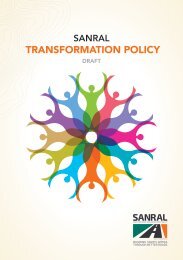Medical Focus - GPH - Vol 3 No 2 250521
You also want an ePaper? Increase the reach of your titles
YUMPU automatically turns print PDFs into web optimized ePapers that Google loves.
The introduction of LAIs should always be done in combination
with adequate psychoeducation and shared decision
making. 1
FGA LAIs versus SGA LAIs
The long-acting injectable first-generation antipsychotics
(LAI FGAs) was first developed in the 1960s. More recently
the long-acting injectable second-generation antipsychotics
(LAI SGAs) has been an important advance in the management
of schizophrenia.
In general, it has been reported that patients with schizophrenia
have a 15–20 year shorter life expectancy than the
general population. It has also been suggested that the side
effects of antipsychotic medications be considered as contributing
to this excess mortality. To this effect Heidi Taipale
and co-workers 13 conducted a large nationwide register-based
data analysis to study all-cause mortality among
all patients aged 16–64 years with schizophrenia in Sweden
(N=29,823 schizophrenic patients). Their results indicated
that LAI use is associated with an approximately 30% lower
risk of death compared with oral agents. Furthermore, SGA
LAIs are associated with the lowest mortality.
With the introduction of more SGA LAIs there has been an
increased focus on the potential benefit of these drugs. A
recent published study focussing on antipsychotic adherence,
discontinuation and rehospitalisation in schizophrenia
included a sample of 3,428 patients receiving oral antipsychotics
and 340 patients receiving LAI antipsychotics after
discharge from hospitalisation. Slightly over half (n = 183) of
LAI users used an SGA LAI. Both FGA and SGA LAI users had
lower odds of nonadherence compared with patients receiving
oral antipsychotics. Similarly, compared with those receiving
oral antipsychotics, LAI initiators also had lower odds
of rehospitalisation. However, when examined separately,
only patients receiving SGA LAIs and not FGA LAIs had a statistically
significant reduction in odds of rehospitalisation.
Among individual LAIs, odds of rehospitalisation only among
initiators of paliperidone palmitate were statistically different
from those among users of oral antipsychotics. 14 One
of the main reasons for non-adherence remains emergent
side-effects on medication. In their published review, Park
et al concludes that the second-generation depot drugs are
better tolerated and have fewer adverse neurological side
effects. 15
A small study evaluated the clinical and psychosocial outcomes
among recent and long-term diagnosed schizophrenia
outpatients treated with LAI-SGA during a follow-up period
of 12 months. As with all antipsychotics the positive symptoms
improved. They also found that the greatest improvements
were among those patients who started LAI-SGA within
5 years of diagnosis. These improvements were on the
PANSS negative and depressive factors, as well as in global
functioning, severity, and intensity of suicidal ideation. Their
preliminary findings support the hypothesis that LAI-SGA
may influence the course of the illness if administered at the
early phase of the illness. 16
Prikryl et al argues for the use of SGA LAIs in the management
of first-episode schizophrenia. In general, approximately
80% of patients with the first-episode schizophrenia
reach symptomatic remission after antipsychotic therapy.
However, within two years most of them relapse, mainly due
to low levels of insight into the illness and nonadherence to
their oral medication. Prescribing LAI SGAs can significantly
reduce the risk of relapse and thus improve not only the social
and working potential of patients with schizophrenia but
also their quality of life. 17 This may have a significant influence
in the longer-term course of the illness.
Pharmacoeconomic data comparing SGA LAIs with oral atypical
antipsychotics regarding reducing dosing frequency, delivery/monitoring
by healthcare provider and improved adherence
found a reduction in healthcare resource utilisation.
SGA LAIs, particularly paliperidone-LAI, were associated with
lower medical costs that successfully offset more than one
half of the higher pharmacy costs relative to oral atypical antipsychotics.
18,19
Conclusion
General consensus indicates that the use of LAIs remains
underutilised. A survey amongst 202 psychiatrists in France
confirmed that most psychiatrists used second-generation antipsychotics
(SGAs), and preferentially an oral formulation, in
the treatment of schizophrenia. They summarised their findings
in that personal experience, government regulatory approval,
and guidelines for the treatment of schizophrenia were
the main factors guiding clinicians’ decision-making regarding
the type and formulation of antipsychotic prescribed. 20
Guidelines for the use and management of long-acting injectable
antipsychotics in serious mental illness were published
in BMC Psychiatry. The authors concluded that using
an evidence-based clinical approach, psychiatrists, through
shared decision-making, should be systematically offering
to most patients that require long-term antipsychotic treatment
a LAI antipsychotic as a first-line treatment. 21
Currently available LAI formulations are predominantly once
monthly injectables. The first 3-monthly injection formulation
of paliperidone palmitate has recently been approved. 6
Pharmacokinetic data indicated stable plasma drug concentrations
over a 3-month period enabling only four injections
per year. This new addition in the management of schizophrenia
adds a valuable new treatment option. 19,22
References
1. American Psychiatric Association. Practice Guideline for the Treatment
of Patients with Schizophrenia (Second Edition). Washington, DC:
American Psychiatric Association, 2010 (Updated Draft Version 2019)
2. Galletly C, Castle D, Dark F, et al. Royal Australian and New Zealand
College of Psychiatrists Clinical Practice Guidelines for the Management
of Schizophrenia and Related Disorders. Australian and New
Zealand Journal of Psychiatry. 2016; 50(5): 1-117
3. Kane JM & Garcia-Ribera C. Clinical Guideline Recommendations for
Antipsychotic Long-Acting Injections. British Journal of Psychiatry.
2009; 195: s63–s67. (doi: 10.1192/bjp.195.52.s63)
References 4-23 available on request.
12
Vol 3 No 2 - 2021











